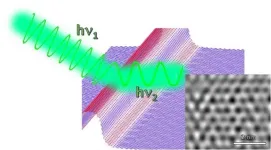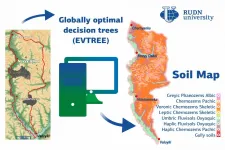(Press-News.org) Certain plasma microRNAs could serve as diagnostic biomarkers in mild traumatic brain injury, a new study from the University of Eastern Finland shows. The biomarkers were discovered in an animal model and they were successfully used also to diagnose mild traumatic brain injury in a subgroup of patients. The study was published in the International Journal of Molecular Sciences.
Mild traumatic brain injury is difficult to detect by contemporary conventional imaging methods. In fact, most patients do not exhibit visible structural damage to the brain, which could be detected by computer tomography. Even without visible structural damage, it is extremely important to diagnose mild traumatic brain injury since patients' ability to work and their overall quality-of-life might become deteriorated. There is a major unmet medical need to identify accurate, affordable, and widely accessible diagnostic biomarkers that could be used to better diagnose patients with mild traumatic brain injury, and to guide them to symptomatic, timely and rehabilitative treatment.
Blood-based biomarkers enable minimally invasive and cost-effective diagnostics. Earlier studies have shown that many biomarkers hold promise for characterising the severity of traumatic brain injury, and they can provide molecular-level information about the ongoing pathological changes. In the newly published study, researchers set out to find microRNAs that could serve as biomarkers to diagnose traumatic brain injury. MicroRNAs, or miRNAs, are small RNA molecules that regulate the expression of protein-coding genes. The researchers sequenced blood plasma samples from an animal model both after mild and severe traumatic brain injury. The miRNAs showing the greatest potential on the basis of the sequencing data were selected for further, polymerase chain reaction (PCR) based analysis.
"We have been developing a suitable analysis and measurement method especially for miRNAs that can be found in small amounts in plasma, and this method is based on digital droplet PCR," Dr Noora Puhakka from the A. I. Virtanen Institute for Molecular Sciences at the University of Eastern Finland says.
"Humans and animals share many identical miRNAs, and this makes them excellent candidates for translational studies, where results achieved in animal models are sought to be applied in humans. However, it has proven challenging to reproduce results from different studies and different sets of data. This is why assessing the quality of measurement methods, and reproducibility, is an extremely important part of biomarker research."
The objective of the newly published study was to identify plasma miRNA biomarkers that are sensitive and specific to mild traumatic brain injury in an animal model, and to explore whether they could also be used to diagnose mild traumatic brain injury in humans.
"We found two interesting biomarkers in the animal model, the plasma miRNAs miR-9a-3p and miR-136-3p, which we then decided to analyse in blood samples taken from patients with traumatic brain injury. Elevated levels of these biomarkers allowed us to identify some of the patients who had experienced a mild traumatic brain injury," Dr Puhakka says.
In other words, plasma miR-9a-3p and miR-136-3p proved to be potential biomarker candidates to diagnose mild traumatic brain injury both in the animal model and in patients.
"Both of these miRNAs are more abundant in the brain than in other tissues, and their elevated levels in plasma could possibly be due to brain injury and the level of its seriousness. However, further research in larger patient cohorts is still needed."
INFORMATION:
The study was conducted by Professor Asla Pitkänen's research group in collaboration with Kuopio University Hospital. Traditional laboratory analyses were extensively supplemented by modern bioinformatics and machine learning methods.
For further information, please contact:
Dr Noora Puhakka, noora.puhakka (at) uef.fi, University of Eastern Finland, A.I. Virtanen Institute for Molecular Sciences, https://uefconnect.uef.fi/en/person/noora.puhakka/
Professor Asla Pitkänen, asla.pitkanen (at) uef.fi, tel. +358 50 517 2091, University of Eastern Finland, A.I. Virtanen Institute for Molecular https://uefconnect.uef.fi/en/person/asla.pitkanen/
Research article:
Das Gupta, Shalini; Ciszek, Robert; Heiskanen, Mette; Lapinlampi, Niina; Kukkonen, Janne; Leinonen, Ville; Puhakka, Noora; Pitkänen, Asla. 2021. Plasma miR-9-3p and miR-136-3p as Potential Novel Diagnostic Biomarkers for Experimental and Human Mild Traumatic Brain Injury. Int. J. Mol. Sci. 22, no. 4: 1563. https://doi.org/10.3390/ijms22041563
The tiniest microchips yet can be made from graphene and other 2D-materials, using a form of 'nano-origami', physicists at the University of Sussex have found.
This is the first time any researchers have done this, and it is covered in a paper published in the ACS Nano journal.
By creating kinks in the structure of graphene, researchers at the University of Sussex have made the nanomaterial behave like a transistor, and have shown that when a strip of graphene is crinkled in this way, it can behave like a microchip, which is around 100 times smaller than conventional microchips.
Prof ...
A cloud simulation that captures the development and evolution of clouds based on atmospheric physical processes is more accurate than other models.
"Our model describes atmospheric conditions and thermodynamic processes as well as the fluid dynamics that govern the motion of air in the atmosphere," says Torsten Hädrich, a KAUST Ph.D. student in the international research team. "This allows us to simulate cloud phenomena more realistically than previous methods."
The model can take known atmospheric information at any time, such as temperature, humidity and wind, and simulate cloud formation, which is used for "nowcasting" of imminent cloud phenomena.
"For example, our model is able to simulate the formation of cumulonimbus clouds by considering ...
Scientists at Cardiff University have discovered a unique way to target a common virus that affects one in 200 newborn babies in the UK but for which there is only limited treatments available.
Human cytomegalovirus (HCMV) is a master at "hiding" from the body's immune system so antibodies and T-cells cannot attack it as they do in other viruses, like the current coronavirus.
The researchers have now discovered a new type of antibody in the lab which - instead of killing the virus directly - marks infected cells so the immune system can "see" them.
Once the immune system can see the infected cells it is able to kill the virus.
The team have submitted a patent for the unique immunotherapeutic and hope it can help to treat HCMV, which can leave newborn babies severely disabled or ...
It does not happen often. But on rare occasions, physicians make mistakes and may make a wrong diagnosis. Patients may have many diseases all at once, where it can be difficult to distinguish the symptoms of one illness from the other, or there may be a lack of symptoms.
Errors in diagnosis may lead to incorrect treatment or a lack of treatment. Therefore, everyone in the healthcare system tries to minimise errors as much as possible.
Now, researchers at the University of Copenhagen have developed an algorithm that can help with just that.
'Our new algorithm can find the patients who have such an unusual disease trajectory that they may indeed not suffer from the disease ...
Scientists have discovered that pollution concentration varies between seasons. A new study, conducted in the North China Plain, determined where volatile organic compounds (VOCs) are distributed within the vertical layers of the atmosphere, and found notable changes from winter to summer.
"The concentration of VOCs in the vertical direction was much higher in winter than that in summer and their emission sources showed different contributions in both seasons," said Guiqian Tang, associate professor in the Institute of Atmospheric Physics, Chinese Academy of Sciences, and the corresponding author of a study just published in Advances in Atmospheric Sciences .
The researchers conducted a field campaign from June 8 to July 3, 2019. They focused ...
Researchers have used the zebrafish (Danio rerio) to identify the role of a gene involved in cardiac rhythm, which could help explain the fundamentals of what it takes to make a human heartbeat.
The University of Melbourne study also found that mutation of the gene, Tmem161b, causes potentially fatal cardiac arrhythmia. 2.5 per cent of Australians are living with cardiac arrhythmia ( END ...
Almost half of people testing positive for coronavirus have reported symptoms of depression, according to a new study published in the International Journal of Environmental Research and Public Health.
Researchers from Bangladesh, the United States and Anglia Ruskin University (ARU) in the UK carried out a cross-sectional survey of more than 1,000 Bangladeshi adult coronavirus patients over the course of one month.
A total of 48% of respondents were categorised as having moderate to severe depression, with a higher prevalence in those with persistent symptoms, low family income ...
Brain tumours are the most common solid tumours in childhood and the largest cause of death from cancer in this age group
Being able to classify a brain tumour's type, without the use of biopsy, is hard to do; however diffusion weighted imaging, an advanced imaging technique, when combined with machine learning, can help a UK-based multi-centre study, including WMG, University of Warwick has found.
Being able to characterise the tumour(s) faster and more accurately means they can be treated more efficiently
Diffusion weighted imaging and machine learning can successfully classify the diagnosis and characteristics of common types of paediatric brain tumours a UK-based multi-centre study, including WMG at the University of Warwick ...
Researchers from North Carolina State University, Boston University and Kraton Corporation have demonstrated a family of self-sterilizing polymers that are effective at inactivating coronaviruses, including SARS-CoV-2 - the virus that causes COVID-19. The work opens the door to a suite of applications that could help to reduce the transmission of COVID-19 and other diseases.
"Our work here provides conclusive evidence that these materials, anionic polymers, can inactivate human coronaviruses quickly and efficiently," says Richard Spontak, co-author of a paper on the work accepted for publication in Advanced Science. Spontak is a Distinguished Professor of Chemical and Biomolecular Engineering and ...
A team of soil scientists developed a new approach to the automatic generation and updating of soil maps. Having applied machine learning technologies to a set of rules traditionally used by experts in manual mapping, the team obtained a highly accurate model that provides easy-to-interpret results. The study was published in ISPRS International Journal of Geo-Information.
Many software solutions for digital soil mapping are based on statistical models. The accuracy of such programs is limited because statistical models depend on the quality and quantity of field data and can ignore local irregularities in soil properties. It is difficult to obtain accurate and useful information from ...


